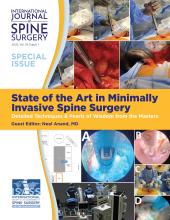ABSTRACT
Background Adjacent segment pathology (ASP) remains a concern following treatment with cervical disc arthroplasty (CDA) and anterior cervical discectomy and fusion (ACDF). Radiographic ASP (RASP) is ASP identified on imaging, which may or may not include clinical symptoms. The risk factors for development of RASP and its clinical effects remain controversial. In part 1 of a 2-part publication we evaluate the incidence and predictors of RASP as well as determine whether any association exists between RASP and patient-reported outcomes (PROs).
Methods Data were prospectively collected during a US Food and Drug Administration randomized, multicenter, investigational device exemption trial comparing CDA (Mobi-C; Zimmer Biomet, Westminster, CO) with ACDF. Multiple post hoc analyses were conducted on RASP as it related to demographics and patient outcomes. Kaplan-Meier estimates of time to Kellgren-Lawrence (K-L) grade 3/4 were calculated separately for all groups. Multivariate Cox proportional hazard models were used analyze whether RASP was associated with patient preoperative demographic characteristics and preoperative and postoperative radiographic characteristics. The association of RASP with PROs was analyzed using generalized estimating equations and matched, retrospective cohort analysis.
Results The incidence of grade 3/4 RASP was lower for patients treated with CDA when initial treatment was at 1 level (27% vs 47%, P < .0001) and at 2 levels (14% vs 49%, P < .0001). Kaplan-Meier estimates indicated significantly lower probability of grade 3/4 RASP over time for patients receiving CDA (P < .001). Treatment with ACDF, treatment of 1 level, higher age, body mass index, higher preoperative physical components score, and a lower Cobb angle were associated with elevated risk of grade 3/4 RASP. CDA was shown to be more effective than ACDF (64.4%; 95% CI = 50.9, 74.2; P < .0001) at preventing RASP.
Conclusions The incidence and risk of RASP is decreased when patients are treated with CDA compared with ACDF. Although the mechanism of CDA that generates this protective effect is not understood, PROs remain unaffected through 7 years despite changes in RASP.
Footnotes
Disclosures and COI: Pierce Nunley receives royalties from K2M, Zimmer Biomet, Camber Spine, and Integrity Spine; is on the speakers bureau for K2M, Zimmer Biomet, Spineology, and Camber Spine; and is a paid consultant for K2M, Zimmer Biomet, Spineology, Vertiflex, Camber Spine, Integrity Spine, and Centinel Spine. He has stock or stock options in Paradigm, Spineology, and Camber Spine. Peter Campbell is a paid consultant for 4Web and Titan Spine. The other authors received no funding for this study and report no conflicts of interest.
- ©International Society for the Advancement of Spine Surgery







